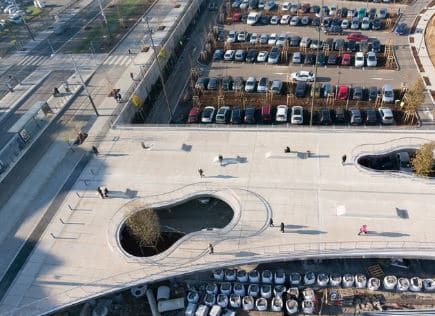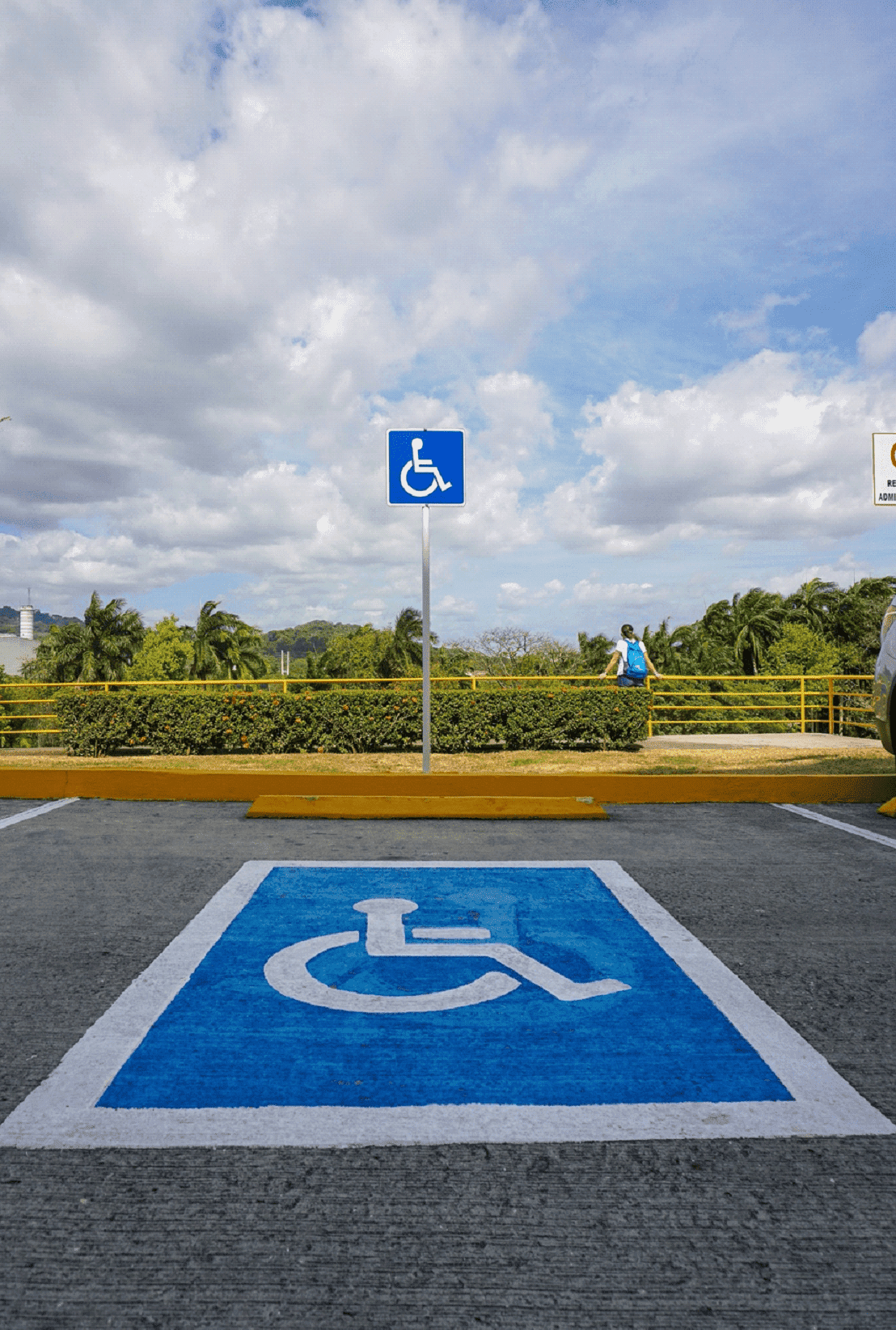
Hospital parking is crucial to the smooth running of healthcare facilities. It has a direct impact on the patient experience, staff efficiency and the fluidity of family visits. Optimal management and organization of parking reduces stress and delays, and ensures fast, safe access to hospital services.
However, hospitals face major parking challenges. Parking congestion, lack of available spaces and difficult access for ambulances are recurring problems. These situations can complicate access to care and reduce user satisfaction.
1. Parking at the hospital: a nightmare for nursing staff

Hospitals face numerous parking problems. Congestion, lack of space and restricted access for emergency vehicles are major concerns. Concrete examples include strikes and recurring problems with parking management.
Parking at the Timone Hospital in Marseille
At the Timone hospital in Marseille, which employs 5,500 staff, only 1,900 places are available. There’s no denying it: the parking lot is completely saturated and staff have to fight to find a space.
Parking at Besançon University Hospital: critical situation
In Besançon, where 7,000 employees work, fed up with a chronic shortage of parking spaces, members of a CHU union carried out a symbolic action on Wednesday, April 10, 2024: they raised the barriers of the parking lot reserved for management.
These situations illustrate the need for effective solutions to improve access and fluidity of movement in hospital parking lots.
2. The challenges of hospital parking management
Better access to the hospital
Hospital accessibility is crucial to guaranteeing equal access to care for all. Parking plays an important role in this accessibility, as it can be a major obstacle for some patients, especially :
- People with reduced mobility: people who use wheelchairs, crutches or other mobility aids. A lack of accessible parking spaces or poorly adapted parking can force them to walk long distances, which can be tiring and painful.
- The elderly: they may have difficulty walking or parking. A lack of parking spaces close to the hospital entrance may deter them from visiting.
- Families with young children: it can be difficult to transport children in strollers in a crowded, poorly designed parking lot.
Example of parking at Bordeaux University Hospital
A concrete example of the challenges posed by hospital parking is that of Bordeaux University Hospital. In 2021, a user association conducted a survey which revealed that 70% of patients and staff had difficulty parking at the hospital. Lack of space, high prices and poor signage were cited as the main problems.
Ensuring user safety
Pedestrian and vehicle safety is paramount. Proper parking management minimizes the risk of accidents and ensures a safe environment for all. For example, well-marked, well-lit crosswalks and speed bumps reduce the risk of collisions.
In some hospitals, security guards are present at peak times to guide traffic and ensure pedestrian safety. What’s more, installing surveillance cameras in parking lots improves safety by deterring dangerous behavior and enabling rapid intervention in the event of an incident.
Increase the efficiency of existing parking options
Optimizing the use of available space is crucial to maximizing parking capacity and reducing the time it takes to find a parking space. For example, the use of real-time guidance systems shows drivers which spaces are available, thus reducing the time spent looking for a space. Mobile applications such as Cocoparks enable users to view parking spaces in real time, improving overall parking efficiency.
What’s more, the construction of multi-storey or underground parking lots significantly increases parking capacity without the need for ground expansion, which is particularly useful in urban hospitals where space is limited.
What is the financial impact of parking?
Parking management has a major financial impact on hospitals and users alike. There are two main reasons for this new provision:
- better management
- and a reduction in illegal parking.
Some hospital managers cite a lack of financial resources and the misuse of parking spaces. By opting for paid parking, we raise money that can be better reinvested, as in the case of the Bordeaux University Hospital’s Pellegrin site.
The importance of communication among nursing staff
Efficient coordination between hospital teams is essential to ensure fluidity of movement and efficiency of operations. If medical transmissions are subject to discontinuity, then this can hinder proper patient care. And parking plays an important role in the smooth running of these transmissions. Staff can’t afford to waste time looking for a place, while feeling stressed when they arrive at work. This compromises transmission quality.
With the growing complexity of clinical situations, shorter working hours and fragmentation of care, the conceptualization of safe medical transmissions has gained in importance in everyday clinical practice. This second article explores in depth the importance and stakes of good transmission.
3. Typology of parking spaces in hospitals and teaching hospitals
PRM parking zones

These specific areas are priority locations for emergency services and people with reduced mobility (PRMs), guaranteeing fast, convenient access to care.
On the CHU d’Amiens site, for example, anyone with a European Parking Card (replacing the GIC – GIG badge since 2000) can ask the lodge for a magnetic beacon in exchange for this card, enabling them to park in one of the spaces reserved for the disabled.
Staff parking spaces
Dedicated spaces have been set aside for hospital employees to provide convenient, secure parking. These areas are located close to service entrances for easy access.
What’s more, certain areas are reserved in the afternoon, as is the case at Strasbourg’s Hautepierre University Hospital, to accommodate staff changes and ensure a smooth rotation of spaces. This organization maximizes the site’s efficiency during the lunch hour.
Parking spaces for visitors
Accessible parking areas are provided for patients’ families and friends, enabling them to park easily and visit without hassle. Many public hospitals in major cities (Nancy, Bordeaux, Avignon, Le Havre, Amiens, etc.) have made their parking lots chargeable for visitors, with the aim of reducing illegal parking and the constant congestion of parking lots.
Parking spaces for ambulances and service vehicles
Priority locations are reserved for emergency and service vehicles, ensuring fast, uninterrupted access to critical areas of the hospital. For example, reserved areas near emergency rooms enable ambulances to drop off patients quickly and unhindered.
Similarly, maintenance and service vehicles have dedicated parking spaces near technical areas to ensure rapid and effective intervention when needed.
Charging stations for electric vehicles
Charging stations are provided to encourage the use of electric vehicles, thus contributing to a greener environment. “It was a request from hospital staff, but we were reluctant to take the plunge, mainly for financial reasons,” explains the director of the Cholet hospital, for example, who is encouraging his staff to go electric. 3 kiosks, including a double kiosk, were installed by DropBird, a Nantes-based start-up that donated 1 of the 3 kiosks to the hospital.
Minute drop-off zones
Dedicated drop-off zones facilitate immediate access to hospital buildings, allowing visitors and patients to be dropped off close to the main entrances.
Still using the example of the Amiens University Hospital, 12 drop-off spaces are available in front of the entrance to the main building of the Amiens-Picardie University Hospital, free of charge for 20 minutes. The aim is to reorganize the area around the entrance to the main building, so as to facilitate the flow of patients in and out of the building.
The logistics zone
Specific spaces are reserved for deliveries and logistics activities, separated from public parking areas to improve safety and efficiency. These zones are essential to the smooth running of the hospital, as they enable the transport of materials, medicines and food, among other things. These are strategic areas that need to be accessed differently to avoid disrupting traffic flow, which is already often complicated.
4. How can we improve parking management at university hospitals?
Develop additional parking facilities and parking lots
The construction of multi-storey or underground parking lots increases parking capacity. Specific parking spaces for staff, patients and visitors optimize space utilization. In Caen, an 850-space, 5-level silo parking lot dedicated entirely to staff will be built.
However, this comes at a significant cost. In general, the average cost of a silo parking lot is around 11,000 euros per space, rising to 15,000 euros per space depending on equipment and local conditions.

Smart parking for hospitals
Deploying an intelligent parking display system helps optimize the use of parking spaces. In this way, drivers are directed straight to the available spaces. Information is displayed via a mobile application, dynamic panels for the general public, and a control panel for decision-makers. In this way, the time spent looking for a parking space is reduced, traffic in the parking lot is reduced and C02 emissions are also reduced. Cocoparks deploys a complete, simple and effective solution to combat these effects.

Policies and regulations for better parking?
Pricing helps regulate parking lot use. Reserved spaces for emergencies and people with reduced mobility guarantee accessibility. Mobility plans encourage the use of public transport and bicycles, thus reducing pressure on parking lots.
On the Nancy University Hospital site, which offers visitors the possibility of reserving parking spaces via the Qpark parking application and site.
In brief
Efficient management of hospital parking improves access to care and hospital operations. By adopting innovative solutions and optimizing infrastructures, hospitals can meet the needs of all users and improve their overall experience.

